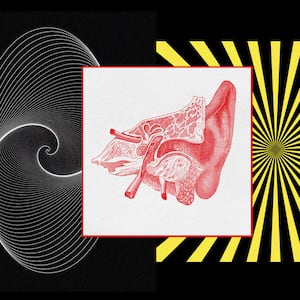There are two things I don’t recommend ever having to experience if you can avoid them.
First, getting flung headfirst over the handlebars of a bicycle, landing face first in some gravel. Second, trying to get the hospital that patched you up to send you the itemized bill they are required by law to provide.
The pain from the first one went away after a week or so. The pain from the second is still here many months later. It has involved many twists and turns—including being told to send a form to an address that doesn’t exist, and verbal authorizations that Dignity Health/CommonSpirit medical centers claim don’t count.
I am now pretty sure the health system giant, which has multiple different websites talking about its values and missions, which they say comes from God and are supposedly about compassion, empathy, and trust, seems to actually be focused on confabulating me until I throw thousands of dollars into their bank account to just get them to leave me alone. I’m not sure what it is the company’s chief mission officer, Thomas Kopfensteiner, actually does, but he might want to look into his employer’s billing practices.
I know that I am not alone in this experience, and horror stories about medical billing abound, but they’re reaching such new levels of absurdity that when I described my ongoing experience to Anthony Wright, the Executive Director of Health Access California, a healthcare consumer advocacy organization, he burst out laughing, and said “this is a more extended and comical version of the normal Kafka-esque version of our healthcare system, but it’s in line with what happens.”
In my case, after realizing I had a deep gash in my chin (along with cuts on my hands, legs, and arms), I went to a local urgent care facility, who cleaned up all of my wounds and bandaged them, but said that my chin (which they also cleaned up) needed stitches, and that the doctor there “won’t stitch faces” for liability reasons.
They charged me nothing and suggested I go to the local emergency room.
The accident happened on Super Bowl Sunday in February, and I was in and out of the ER in less than an hour. There was no wait, as they immediately put me in a room after getting my info, and had an ER doctor give me five stitches in the chin (again, the urgent care center had already cleaned up everything for free), and sent me on my way just after the Kansas City Chiefs came back to win the Super Bowl (I heard some cheering deeper in the bowels of the hospital as I was getting ready to leave).
A few weeks later I received a bill from the doctor (not the hospital, as why would those come together?) charging a few hundred dollars for what his own bill describes as a “SIMPLE REPAIR.” My health insurance covered most of it, leaving me with a bill of $65. Great.
Many months later, however, the hospital’s bill arrived. It was for $8,455.00. Apparently, my insurance company was willing to pay $6,448.61 of that, leaving me with a bill of $2,006.39.
Almost (but not quite) more curious than annoyed, I set out to find out how my less-than-an-hour visit to get five stitches (performed by a doctor who had already charged me) could possibly cost over $8k.

I guess I shouldn’t have been that surprised. Literally in the introduction to her amazing book, An American Sickness: How Healthcare Became Big Business and How You Can Take it Back, Elisabeth Rosenthal asks, “Who hasn’t wondered over, say… a $5,000 bill for three stitches in an emergency room?”
That was me! With two more stitches and three thousand more dollars.
The bill itself says that if you’d like an itemized statement to please call their business offices. I’ve heard enough medical billing disaster podcasts to know that you should always ask for an itemized bill before paying. So I called, was told this was no problem, and an itemized bill would be sent out immediately. A month went by and all I received was a text message telling me my bill was due.
I called a second time. The person I spoke to apologized and insisted that the itemized bill was now on its way. The following week, instead of an itemized bill, I received three copies of an identical, badly photocopied, two page form, allowing me to authorize Dignity Health to send me an itemized bill—which I had already done twice over the phone (both times I had had to prove I was really me both to the automated system and then again to the human being I eventually spoke to).
But—and this was the really absurd part—nowhere in any of the copies of the forms did it say what to do with the forms. There was no information on where to return them. There was no address to send them to. There was certainly no return envelope.
There was nothing. Frustration-inducing nothing.
At this point, I decided to write this article and emailed Dignity Health’s “media inquiries” address, hoping they could explain to me how this was actually all my fault and I was missing something obvious. Dignity Health’s media team decided it was best not to respond.
The oft-misunderstood HIPAA law requires that a hospital send you an itemized bill within 30 days of you requesting it, but as Patrick Haig, the founder and CEO of Goodbill—a company that steps in and helps overwhelmed patients negotiate their hospital bills—told me, nearly 60 percent of hospitals violate this law. When asked why hospitals do this, Haig told me that his company has been collecting all of the excuses, including that “it will only confuse customers,” to get the details of their bill.
I called the billing office again, receiving a message that their “automated phone system is not working,” before it hung up on me with no further information.
A couple of days later I tried again, and the automated phone system was working enough that I was able to tap in my statement ID, my phone number, and my date of birth—and the system identified me, told me I owed them $2,000 and asked me if I wanted to pay or to speak to someone. When I tapped the button to speak to someone, it told me that their automated phone system is no longer working, and the system hung up.
Convenient!
I emailed Dignity Health media relations again.

The next week, I finally spoke to someone, who didn’t seem at all concerned that their form didn’t have an address to send it to, and said she’d need to look up where to send it, as if I were the first person to actually want to return such a document.
Eventually, she said to send it to: “72997, San Francisco, CA 94160.”
Yes, 72997. I pointed out that this was not an actual address. There was no street name.
She paused and said “Okay, try this,” which is already not a comforting start, “PO Box six zero zero zero zero, San Francisco, 94160.” I wasn’t even sure how many zeros, so I double checked. It was PO Box 60000. I asked her what about the 72997, and she told me “cross that out, it doesn’t matter.” I asked her if there was a street name, and she said no.
A Google search shows that this address is something of a catchall for lots of organizations, including many hospitals, insurance companies, property owners, and even the Safeway grocery chain. Most of the others include a “lockbox” or “file #” which I’m guessing is what the 72997 is, though, the person on the phone told me to “cross that out” so who knows? Maybe my authorization would get through, maybe it wouldn’t.
I also asked her if she could push back the “due date” on my bill, considering they still had not sent me the required-by-law itemized bill they had promised, and she told me “sure,” but would not tell me to what date.
I emailed Dignity Health media relations again.
Haig, from Goodbill, did not seem surprised by any of this, though he also told me that if I were to ever actually get the itemized bill to not be surprised to find it useless. “My first bone to pick with itemized bills: it’s not necessarily the one that’s going to show you every single thing in a way that you can then take and cross reference across other hospitals and other systems.” He suggested that a better document, though also difficult to obtain, is the detailed UB-04 claim form that the hospital sends to insurance companies, which gives you much greater detail.
Haig’s colleague at Goodbill, Leslie Kwoh, the company’s Head of Growth, also explained, “different hospitals may have their own definition of itemized, and they’ll tell you ‘this is an itemized bill’” when it isn’t, and by then “you’ve wasted one cycle and your bill is that much older, that much closer to collections.”
Wondering if it would be easier to get the information via Dignity Health / CommonSpirit’s website, I tried to log in, and despite filling out the exact same information I gave their phone system (which properly identified the bill in question), their website told me it had no record of any bill for me.
I emailed Dignity Health media relations again. This time I also emailed a media relations address for CommonSpirit (they are the same organization, having merged four years ago, but they do not make it clear which name the organization actually uses, as both appear interchangeably).
Elisabeth Benjamin, the VP of Health Initiatives for Community Service Society in New York, told me that her “holy grail” has been to pass a law that requires patients to get a single itemized bill, rather than a stack of confusing and unexplainable bills. She notes that there was a bill designed to do that proposed in the New York State Assembly, but it went nowhere. “People loved our bill. But legislators don’t love it, because they have a hospital in every district and the hospitals hate it.”
I asked her why they hated it so much, as it seems like it would be more efficient for everyone, including the hospitals, and she said the hospitals have spent money on computer systems to talk to insurance companies, but they say it would cost way too much to create a similar one to actually tell patients what went into their bill. Notably, just a few days ago CommonSpirit excitedly announced its new computer system that promises to “improve equitable health outcomes,” but appears to have nothing to do with billing or transparency.
After hearing my story of trying to get the bill, (to which she said “that’s just so wrong,”) Benjamin also told me people shouldn’t have to go through a crazy process just to understand their medical bill, and that calling the hospital won’t help “because those billers just want you to pay. They’ve been trained to think everyone’s a deadbeat.”
As for the computer system that interfaces with insurance companies that Benjamin mentioned, Haig pointed out this is often the best way to actually get the useful information, and highlighted that his company has Application Programming Interface (API) access to some insurance company backends, including (it turned out) mine, allowing it to access information within those systems.
Less than a minute later, after entering my information into Goodbill’s site, Haig (with my permission) shared his screen to show me the very information I had been hoping to see in the itemized bill that I am still unable to get myself. There, we learned that the hospital had coded my very quick in-and-out in less than an hour procedure, which the ER doctor himself had coded as a “simple repair,” as a level four (out of five, with five being the highest and most extreme) emergency, which is the bulk of the charge.
If it were marked as a level three, that would have been about $2,500 less, according to the hospital’s Chargemaster (which, after some searching, I was able to download off of the web). If it had been level two, the bill would have been over $3,500 cheaper.
Looking at the standards set by the American College of Emergency Physicians, I’d argue this was a level two visit (“minor laceration repair”—which certainly fits with the ER’s doc’s description of “simple repair.”) This error is what’s referred to as “up-coding” and is apparently quite common.

And that’s just the “list price” in the Chargemaster. Everyone I spoke to said hospitals rarely charge the full rate.
Benjamin pointed out to me that the hospital, like any hotel in the world, should just hand me a detailed itemized bill as I left the ER, so I could check things like that. “The problem is, if they did that, then this little up-coding thing like what happened to you, wouldn’t be able to happen if you had a real-time bill generated.”
Wright, from Health Access California, told me my experience is perhaps a microcosm of the issue that is happening at a macro level with federal and state laws over the last few years, pressuring hospitals to be more transparent. He told me “the hospitals are being very resistant to such transparency at a broad policy level, and what you’re dealing with is just a micro-version of it. Big purchasers, like CalPERS (the California Public Employees' Retirement System) and the federal government, are having a hard time getting the same information from hospitals at a macro level.”
As for Dignity Health/CommonSpirit, I eventually sent them six separate emails to two different media contact email addresses, hoping to at least get their side of this story. None of the emails received a response.
I guess this is consistent: the medical giant that won’t send you an itemized bill, also won’t talk to the media. Not communicating as a core competency.
I should note that CommonSpirit, which holds itself out to be the latest version of the legacy of Catholic nuns providing charity healthcare going back nearly two centuries, has a relatively new CEO, Wright Lassiter III, who, at the previous “non-profit” health system where he was CEO, earned over $5 million per year. His predecessor as CEO at Dignity Health/CommonSpirit, Lloyd Dean, earned over $10 million per year back in 2018, which likely went up in ensuing years.
One would think the company could afford to build a computer system that could provide all this information to customers, and not just to insurance providers. Or to have a media team that responds to press emails. Apparently, that money is better spent trying to hide from such transparency and put out messages about how truly committed they are to “humankindness and health justice.”
Just the fact that a small startup, like Goodbill (total money raised: $3.4 million according to Crunchbase), was able to give me access to the information I needed in less than a minute, while CommonSpirit, which just last week reported revenue of $34.6 billion in 2023, is hiding from me, suggests that this system is totally broken. And it’s that way on purpose.
Perhaps that’s something that CommonSpirit’s chief mission officer should look into?










